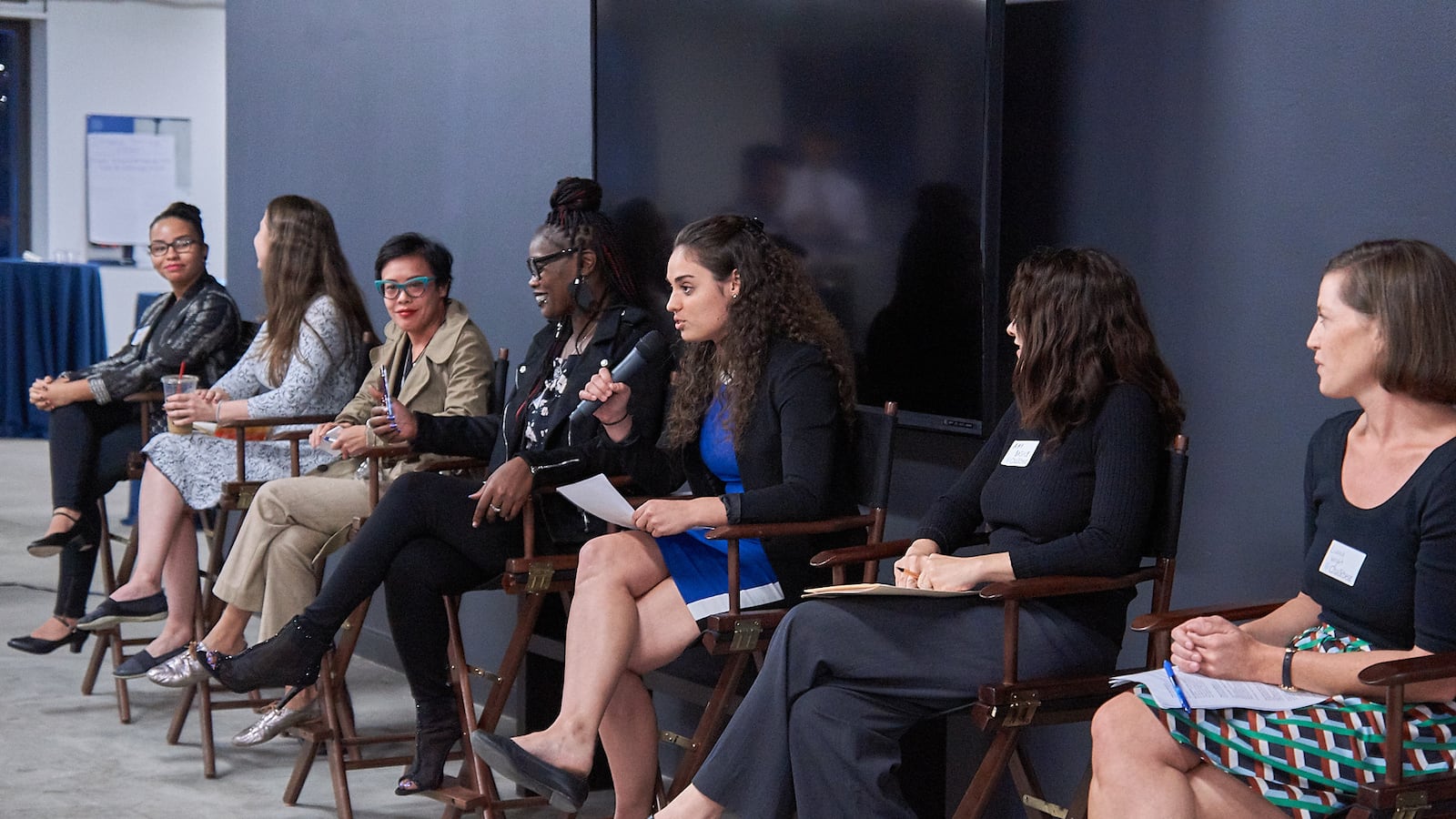New York City’s choice system is supposed to give every student a shot at attending a top high school. But in reality, low-income students of color are often stuck in low-performing schools.
Last week, Chalkbeat invited a parent and student, a researcher and an admissions advocate, and two education department officials to take part in a public discussion. We wanted to know: When it comes to the high school choice process, what are the barriers separating some students from high-achieving schools — and how can those obstacles be removed?
We want you to join the discussion. Click here or keep reading to learn how.
Two competing schools of thought emerged during the talk, which about 120 people came to watch. On one side, some said the problems revolve around some families’ limited information about how to navigate the time-intensive application process, and solutions should be geared towards improving communication and guidance for families and students.
But others said the problems go much deeper: Students who attend high-needs schools often aren’t prepared to compete for seats in the most exclusive high schools, even as their families often lack the time and resources to help them find other strong alternatives.
“The whole system is flawed and it’s geared to have certain students fail,” said Tanesha Grant, a parent from Washington Heights whose daughter attends Urban Assembly School for the Performing Arts. “Every child is equal. We make them unequal with the process.’”
After the discussion, audience members — who included people who work in schools and education-oriented nonprofits, along with parents — voted on ways to make the admissions process more fair.
The solution that earned the most votes was reducing or eliminating screened schools, which admit students based on their test scores, interviews and report card grades, among other criteria.
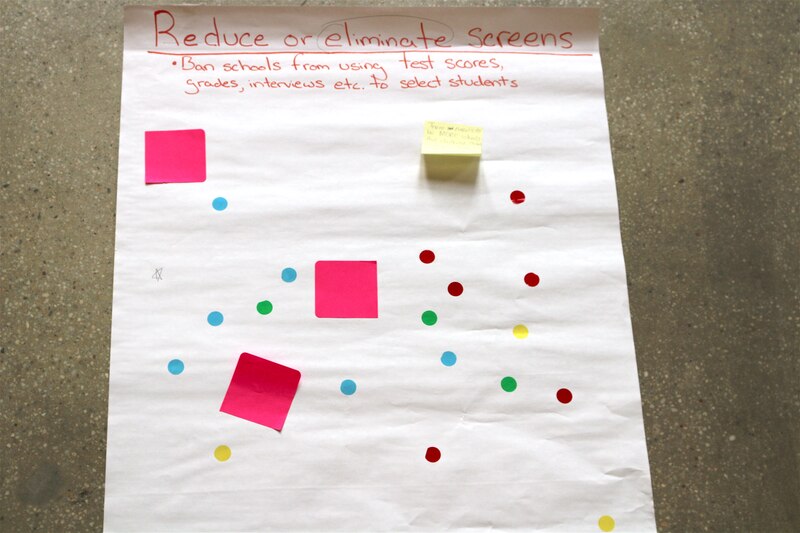
The second most popular solution was providing better information to students and families, perhaps by improving the high school directory or adding more guidance counselors in middle schools who can help guide students through the process.
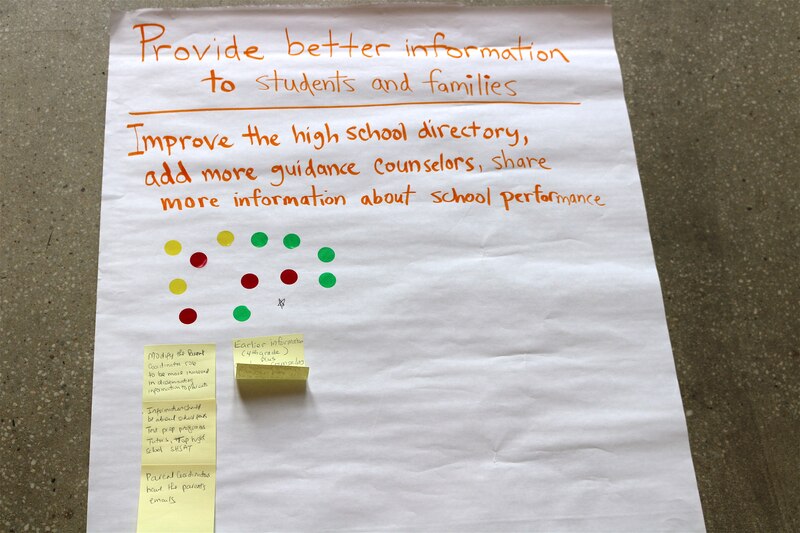
Many other attendees came up with their own solutions.
Those included: expanding the role of parent coordinators, who are already stationed in schools, to help families understand the process; changing the algorithm that matches students to schools so that diversity is weighed in admissions decisions; and hiring more black and Hispanic teachers who can serve as a welcoming presence when students of color are picking schools. You can find more in the photos.
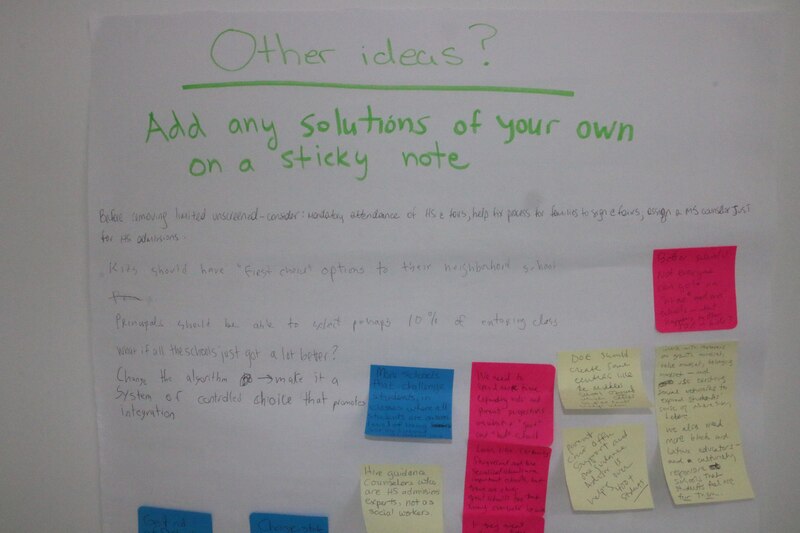
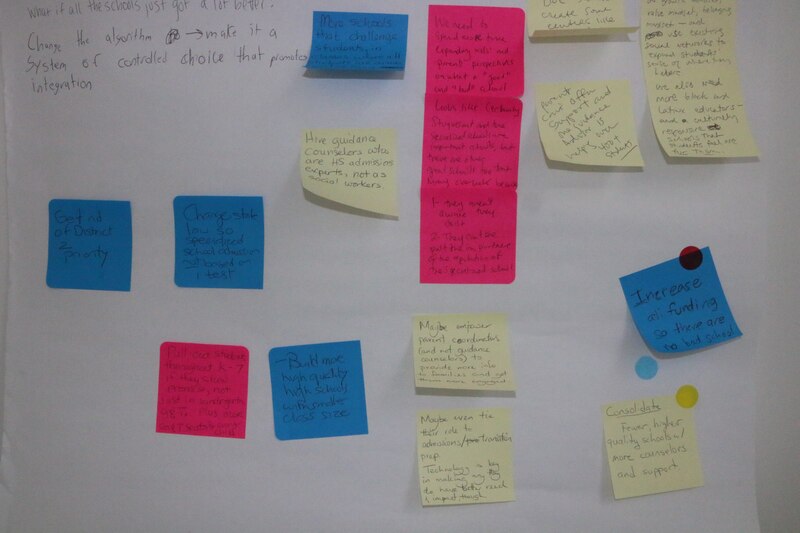
The audience also submitted dozens of written questions about how the process is working (or not). They wanted to know how much leeway schools get to choose their students, what is being done to help immigrant families understand the process, and how the city can create more high-quality high schools in neighborhoods that lack them.
Now, we want to you to weigh in.
We distilled the audience queries into a handful of questions based on common themes that emerged. We’re hoping to follow up on some of them — but first we want to know which ones are shared by the most readers.
We’d love it if you’d use the form below to vote on which question is also puzzling you — or if there’s another you’d like us to pursue.
Thanks for joining the discussion!

